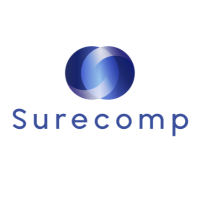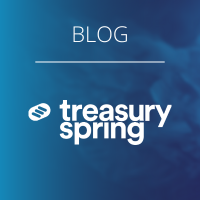Trade finance offers exceptional growth opportunities for businesses looking to trade internationally, but has sadly lagged behind other services due to its complicated nature and high barrier to entry. Surecomp streamlines this process through digitalisation helping to unlock greater access to all businesses.
As an ambassador for Surecomp and their award-winning RIVO solution, I would like to share the following article and the possibility to experience this in an upcoming event (details below)
The World Trade Organisation (WTO) estimates that 80–90% of world trade relies on trade finance. It is a mechanism that not only ensures security between importers and exporters but can also extend a line of credit to companies desperately needing cash flow to get their operations moving.
Pandemic disruptions, political upheaval and currency fluctuations have made companies more nervous to trade internationally.
With every crisis, trust among the participants goes down and that’s when you reconsider the risk that is involved in open account transactions. The more insecure these financial flows to physical supply chains are, the more you want to secure them with f.i. a guarantee from trusted financial intermediaries. Unfortunately, trade finance has not always been a straightforward solution due to an excessively manual process, and a lack of access to smaller corporates who might not have the know-how to get the best deals.
However, this is a narrative that Surecomp wants to change. For the last 35 years, Surecomp has provided trade finance solutions to a very small group of multinational corporations (MNCs). Now we are providing solutions to a far broader space … even SMEs can have access to our state-of-the-art solutions.
Why can trade finance be so challenging?
Historically, trade finance has been tied to paper because it relies on ownership of title documents, for which it is difficult to implement a universal digital solution.
Fact check: As a corporate, you should have to agree with your corporate counterpart, not only on the details of the transaction, but also on how to exchange the transaction, and the one global standard that provides interoperability is paper. Trade finance is the only business where digitisation is attaching a PDF to an e-mail.
This system is slow because contracts must be agreed upon, written, and approved within, sometimes incompatible, working hours. Guarantees can take weeks, by which time exchange rates or demand could have shifted and can result in burdensome fees and time wasted.
Documents can get lost in the process leading to further delays, poor limit management, or banks chasing for already paid fees. All these factors create instability and could damage trading relationships in the process.
There has long been a trade finance gap between MNCs and SMEs, that makes access far more difficult for smaller corporates. While a major disparity is due to smaller enterprises having fewer data to prove they are a good risk for financing, they also lack the knowledge and manpower to get the best deals.
This means that smaller corporates “may not even be aware that there is a trade finance instrument available that could serve them,” and have no way to bridge the gap because they are limited by the types of financial institutions they work with.
For all these reasons, it is becoming essential that the trade finance process moves with the times and becomes more streamlined. This will not only help systems move more quickly, but can also improve access to smaller corporates, giving them greater opportunity to grow their businesses.
Digitalising trade finance is the solution
To open the door and democratise trade financing requires digitalisation, which will help create connectivity and communication between financial institutions and corporates of all sizes to access the services they need. The first step in this process is to provide an easily accessible hub for all parties, which automatically helps move things away from a paper-based system.
This will allow converting title ownership documents to a digital record and building trust in the market that this is a safe and viable solution. One that meets a recognised standard using a “technology [that is] able to clearly identify who’s the owner of the digital record,” such as with a decentralised ledger or other similar solutions.
This will not only help to keep documents secure and organised, while offering the same security as a paper-based system but can also help businesses meet their ESG goals by reducing waste. It will also give treasuries the push they need to adopt electronic trading documents, which to this point has not been a major concern and has led to low innovation.
Not only this but software-as-a-solution (SaaS) vendors, like Surecomp, give access to huge amounts of data and are a great way to help corporates, especially SMEs, to evaluate their options for financing.
Technology can help establish a collaborative platform where the beneficiary is invited to use the bank.” Many corporates “still think that Microsoft Word, Excel and email are proper trade digitisation tools … they’re not aware that there are solutions out there that are cost-efficient and easy to implement.” But as banks across the world are demanded by their corporate customers to deliver a more efficient service, more and more are now opening up to cloud adoption, which is in turn leading corporates to realise the benefits of a cloud-based collaborative trade finance platform.
This is precisely the concept that Surecomp is striving for with their RIVO platform;
“To provide technical access that is as open as we possibly can be to streamline the process for companies of every size.”
Will I see you on 8 June in Houten?















